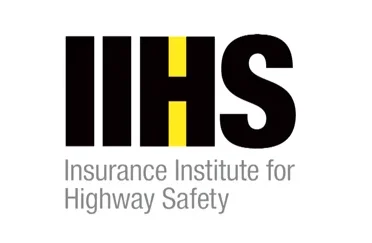Since the Insurance Institute for Highway Safety began rating persistent seat belt reminders in 2022, automakers have moved quickly to install louder, more persistent reminders.
The first year, only 17% of the new models tested earned a good rating, while 65% were rated marginal or poor. But manufacturers have already flipped those numbers. Sixty-two percent of the 2024 models tested so far are rated good, while only 24% are rated marginal or poor, according to an IIHS report.
“Automakers can boost a vehicle’s performance in this test with just some small software changes,” said David Harkey, IIHS president. “These easy tweaks can have a big impact on safety.”
Eighteen vehicles with seat belt reminders that previously fell short recently earned good ratings from IIHS for their latest models. The improved vehicles are the Acura MDX, Ford Escape, Ford Expedition, Ford Maverick, Honda CR-V, Honda HR-V, Honda Odyssey, Honda Pilot, Hyundai Tucson, Mazda CX-5, Mercedes-Benz C-Class, Nissan Altima, Subaru Crosstrek, Toyota Corolla hatchback, Toyota Corolla sedan, Toyota RAV4, Toyota Tacoma and Volvo XC40.
Eight models were previously rated poor, which means they only included a brief reminder for the driver seat. Seven more were rated marginal due to reminders that weren’t long enough or loud enough. Three others were rated acceptable, which means they met the requirements for the front-row seating positions but not for the second row.
In 2022, about 92% of front-seat occupants and 82% of rear-seat occupants were belted in the government’s on-road observational survey of seat belt use. But a much smaller percentage of the vehicle occupants killed in crashes — half of those in the front seat and a quarter of those in back — were belted during the crashes that killed them.
“The math is pretty simple,” said David Kidd, the IIHS senior research scientist who led that research as well as the development of the seat belt reminder rating program. “We found that an audible reminder that lasts at least 90 seconds increased belt use by around 30%. That means we could save almost 1,600 lives a year if every vehicle on the road was equipped with a good-rated system.”
The National Highway Traffic Safety Administration proposed tougher federal standards in 2023, but the proposed rule lacked several important components, such as an adequate volume requirement, and has not moved forward.
For now, regulations specify only that seat belt reminders must include an audible signal that lasts for 4-8 seconds total and a visual alert that lasts at least 60 seconds whenever the driver’s seat belt is unbuckled. Such short reminders are easy to ignore.
In contrast, for a good rating from IIHS, vehicles have to have an audible reminder that lasts at least 90 seconds if any of the occupied front seats remains unbuckled, as well as meet volume standards and other conditions.
“This rapid progress represents a big win,” Harkey said. “Making sure everybody uses their seat belt on every trip is a simple way to save lives.”
